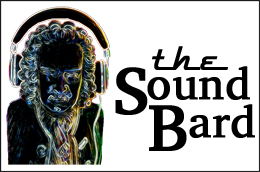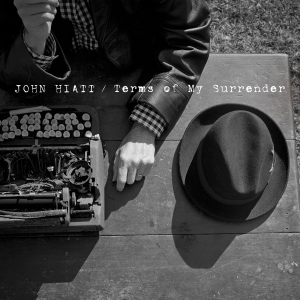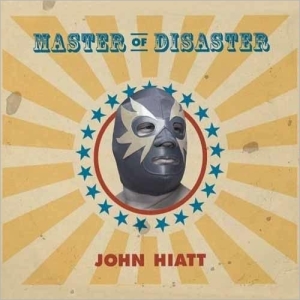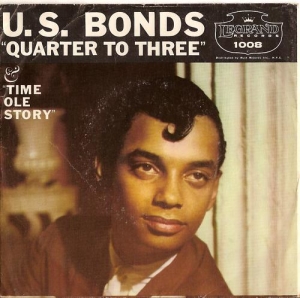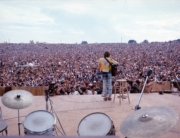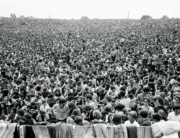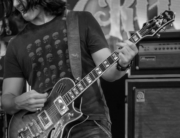BY MIKE METTLER — JULY 9, 2014
“We don’t want to shut the door, we want to open it.” John Hiatt has just described the up-close and personal vibe that’s spread all across his new album Terms of My Surrender, out July 15 on New West. Surrender was cut live with Hiatt and his bandmates ensconced around each other in Studio G in Nashville, and the intimacy is intrinsic to every note. Stomps, claps, and a taut kick drum set the tone at the outset of “Long Time Comin’,” as Hiatt murmurs, “Mmm-hmm, let me see” before he begins strumming his acoustic guitar to lock into the groove. And the über-deep, practically resigned breath he takes before diving into the starkly personal “Nothin’ I Love” just adds to Surrender‘s core honesty. Hiatt, 61, and I recently got down to jawing about knowing when a final master sounds right, how he consistently fails at properly sequencing his records, and trying to convince his dad that stereo was a cool thing. Says the masterful singer/songwriter about Surrender, “The goal was to make it feel like we were all together on the back porch.” Pull up a chair and join the unbroken circle.
Mike Mettler: I am going to officially accept your terms of surrender, so thanks for the offer. It’s much appreciated.
John Hiatt [laughs heartily]: Yeah, well, you know, what else can I do? I give.
Mettler: Well, you can keep making records like this one, because I love the sound of it. You basically cut it live off the floor in Nashville. Was that the plan all along, that everybody would record together?
Hiatt: Thank you very much. It was done at Doug Lancio’s place. He produced it, and he also plays guitar on it. He’s got a little joint over on the other side of the river here in Nashville. We’ve always cut records that way, with people playing together. I also did some things where it was just me and Kenneth [Blevins, his drummer]. It’s a novelty these days. [chuckles]
Mettler: It is, but it lends to more honesty when it comes to songs that start with just your voice and your guitar. You get the full character of you counting a song in or taking a breath before you start singing or playing. That just makes sense for this kind of record.
Hiatt: Yeah, it sure does. Getting the song and the feel, to me, is what you’re trying to do.
Mettler: Did you record in 96/24?
Hiatt: You know what, it’s not even that — I think we did it at 48/16, nothing fancy. I did have a really good vocal mike, though — I think it was an M49 [Neumann TLM49 condenser microphone], which sounds good on my voice. And I brought in this little cheesy Silvertone amp I’ve had for years, a little laid-in speaker thing.
Mettler: I don’t think a Silvertone amp is allowed to be called cheesy anymore.
Hiatt: Well, I’ve had this thing since back when they were cheesy. They’re in vogue now, I think.
Mettler: You can call them vintage.
Hiatt: You can. I played an acoustic guitar on everything. Sometimes it was my [Gibson] J45, sometimes it was that old Harmony that I use. We hooked a pickup to each one of them and ran them through the amp, and miked it as well. So we used both signals, and that was kind of the tone. And of course I was singing and playing at the same time, with the acoustic bleeding into the vocal mike, and that was the sound.
Mettler: That, to me, makes for a better record. When you kick off with “Long Time Comin’,” I just prefer that in-the-room sound, the ambience of you guys clicking together at the same time. You can’t ProTool that.
Hiatt: Yeah, it’s live, so we’re kind of inviting y’all in to give us a listen. [chuckles]
Mettler: It’s a sitdown kind of record. Is the best way to listen to an album like this one on vinyl?
Hiatt: I love doing vinyl. Some people protest when you cut it in digital, but there’s still a mechanical end to it that makes it sound wonderful. The fact that you go through the mechanical cutting of a lathe going into a disc makes a beautiful sound, whatever your source is. So it’s well worth doing.
Mettler: Do you personally prefer vinyl? Do you get a chance to listen to LPs very often?
Hiatt: Not as often as I’d like. I’m probably like a lot of people: I listen in my car because it’s convenient. I always have, ever since cassette tapes. Hell, I used to listen to 8-tracks. I had a set of home speakers sitting on the back ledge of my Plymouth Duster, and my 8-track player underneath the dash. It was a good setup. [laughs]
Mettler: Wait, this is important. What did you listen to with that setup?
Hiatt: God, I remember I had a Sly Stone — when Fresh came out [June 1973], it just blew my mind. “If You Want Me to Stay” — man! It just freaked me out. “How do you make that kind of music?” — that was my question. A sad story. He’s so great.
Mettler: I wrestle with convenience over quality sometimes. Speaking of high-res, Master of Disaster [2005] was a 192/24 recording, wasn’t it?
Hiatt: Yeah, it was. I did two other albums at my home studio that were cut on a DSD system: Same Old Man [2008] and The Open Road [2010].
Mettler: That was the Sonoma system, right? [i.e., the Sonoma 24-channel Direct Stream Recording and Editing System]
Hiatt: Yeah, the Sonoma, which beats all of that stuff. It’s a single-bit continuous-stream digital system. It was awesome. Everything gets reduced down to 16-bit, but the detail in those records is amazing.
Mettler: I’d love to hear those recordings in their original high-res form. You should let your old friend Neil Young have them for Pono.
Hiatt: Have you ever heard that system?
Mettler: Yes, I have. And I’ve spoken to Neil about it too. [Full Pono story to come in the September 2014 print edition of Sound & Vision, and online here soon as well—Yr. Aurally Blessed SoundBard] It’s really fantastic. The amount of detail you’ll hear in original master recordings is something else. We gotta Pono you up, I think.
Hiatt: Cool. How about that. I’m gonna be Pono’ed.
Mettler: That could be a song right there.
Hiatt: Yeah. “I Hope My Pono Knows the Way Back Home.” [both laugh]
Mettler: Write that one down. I won’t steal it. On another note, can you recall the first song or record that really impacted you as a listener, as a kid?
Hiatt: Yeah: “Quarter to Three,” Gary U.S. Bonds. Just blew me up. I had the 45, and I couldn’t stop playing it. I loved everything about it: the sound, the hissing in the sax solo… yeah. That did it for me. [“Quarter to Three” was released in May 1961.]
Mettler: Was there a particular album that made you go, “Yeah, this is what I want to do”?
Hiatt: The first album that I can remember buying, I took a bus downtown and I bought, what the hell did I buy [pauses]… let’s see… I think the first album I bought was by The Beatles. Yeah, it was Meet the Beatles! [MTB! was released in the U.S. on January 20, 1964.]
Mettler: Were you still in Indianapolis at that point?
Hiatt: Yeah, yeah. It was a big deal. I took a bus all the way downtown, and there was a music store, the Lyric News & Record Shop. I went in, bought Meet the Beatles!, brought it home, played it down in the basement, and just listened to it over and over again.
Mettler: And here we are now.
Hiatt: That kind of started the whole deal, the journey. And then I’m buying Manfred Mann, the Dave Clark Five, and The Rolling Stones. And then it’s like, “What’s that ‘Little Red Rooster’?” What the heck is that? Oh, Willie Dixon; oh my God!
Mettler: Did that give you a sense of, “Hey I can write songs,” in addition to just playing them?
Hiatt: You know, I was already writing songs. I had a little band together. Of course, we tried to learn those popular songs of the day, but we always had a song or two that we threw in. I was lucky. I had a couple of guys who were in the same grade I was in who played guitar and wrote songs too. It was weird, and it was amazing. We all had some original songs to play. It was cool.
Mettler: What compelled you to want to write in the first place? Was it The Beatles, or was it just something you wanted to do?
Hiatt: Well, I picked up the guitar and I took lessons for about 2 months. I was frustrated because the guy was teaching me single-line melodies, and I just wanted to play some chords. I had a Mel Bay chord book and I learned three chords, and the next thing you know, I’m singing over it. And I wrote down some lyrics so I had something to sing. It was just what I — I had to do it. It was something I was going to do. I guess. [chuckles]
Mettler: One of the most interesting things on Terms of My Surrender is the character of your voice, as we get to hear how it’s changed over the years. You said you realized you were singing in a lower register while you were working on the album. Did you have to adjust how you wrote and played for it?
Hiatt: Well, yeah, you know, these songs are all in a lower register. It just kind of happened. The last couple of records, I sang up in my usual sort of “rock” voice — and I can still sing up there for the most part, but I’ve definitely cut down in register some. These songs were all kind of written down there. The first song we cut was “Face of God,” and it just came out in that sort of voice, which carried through the whole deal. That’s it.
Mettler: Another important thing when putting a record together is the sequencing. How good are you at it?
Hiatt: The sequencing has gotten better over the years, as I’ve let someone else do it. [laughs] It’s funny, because I’m good at writing a live set, but sequencing just baffles me. I mean, I can help: “Yeah, that’s a good starting song.” “Yeah, this will end the record well.” But I get lost in the middle.
Mettler: Wow. Why is that?
Hiatt: I don’t know. But Doug put it together. I moved a couple of things around, but I need help. I’m sick, and I need help. [chuckles]
Mettler: You’re a master of disorder.
Hiatt: That’s right. I’m disordered. I have a disorder! [both laugh]
Mettler: In terms of mixing and mastering Surrender, did you have any special instructions?
Hiatt: Well, Doug’s got great ears, and I’ve got good ears, so… we’ve been doing it this way for a long time. I spent years sitting in mixing rooms, and it’s so tedious and boring to me; I couldn’t stand it anymore. So I quit doing that years ago. Doug would send me the mixes, and I’d give him some input: “The voice needs a little more treble here. Take some more of the bass and heaviness off there.” But most of the time he sent me mixes, I’d think, “Man, that sounds great.”
And the mastering — I try to stay out of that too. John Baldwin mastered it twice, and the second one I didn’t like. He and I agreed the first pass was the best.
Mettler: What was different about the second pass?
Hiatt: He tried to push it a little, and it sucked out some of the invitational sense that you talked about. It kind of closed that off a little bit. It was less inviting. And we want to let people in. We don’t want to close them off. We don’t want to shut the door, we want to open it. The goal was to make it feel like we were all together on the back porch.
Mettler: It really does feel like we’re sitting right there with you guys, sharing the whole story together. Ok, last thing. You did a couple of records in surround sound — Bring the Family on SACD and DVD-Audio [in 2004], and Master of Disaster on SACD [in 2005]. Is that something you think about at all these days, of doing any more 5.1 mixes of your work?
Hiatt: I’m still more of an old left–right guy — stereo — but more because of my age, probably. I remember when stereo first came out, trying to convince my father it was different from mono. And he wasn’t buying it! “But, Dad — there’s an instrument on the left side, and it’s not on the right side!” Then he would say, “It’s the same! They’re just selling you new shit!” [laughs] He was funny.
Tags: 5.1, Bring the Family, CD, DSD, Gibson, John Hiatt, LP, Master of Disaster, mono, Nashville, Neil Young, Neumann, Pono, Same Old Man, Silvertone, Sonoma, stereo, surround sound, Terms of My Surrender, The Open Road, vinyl